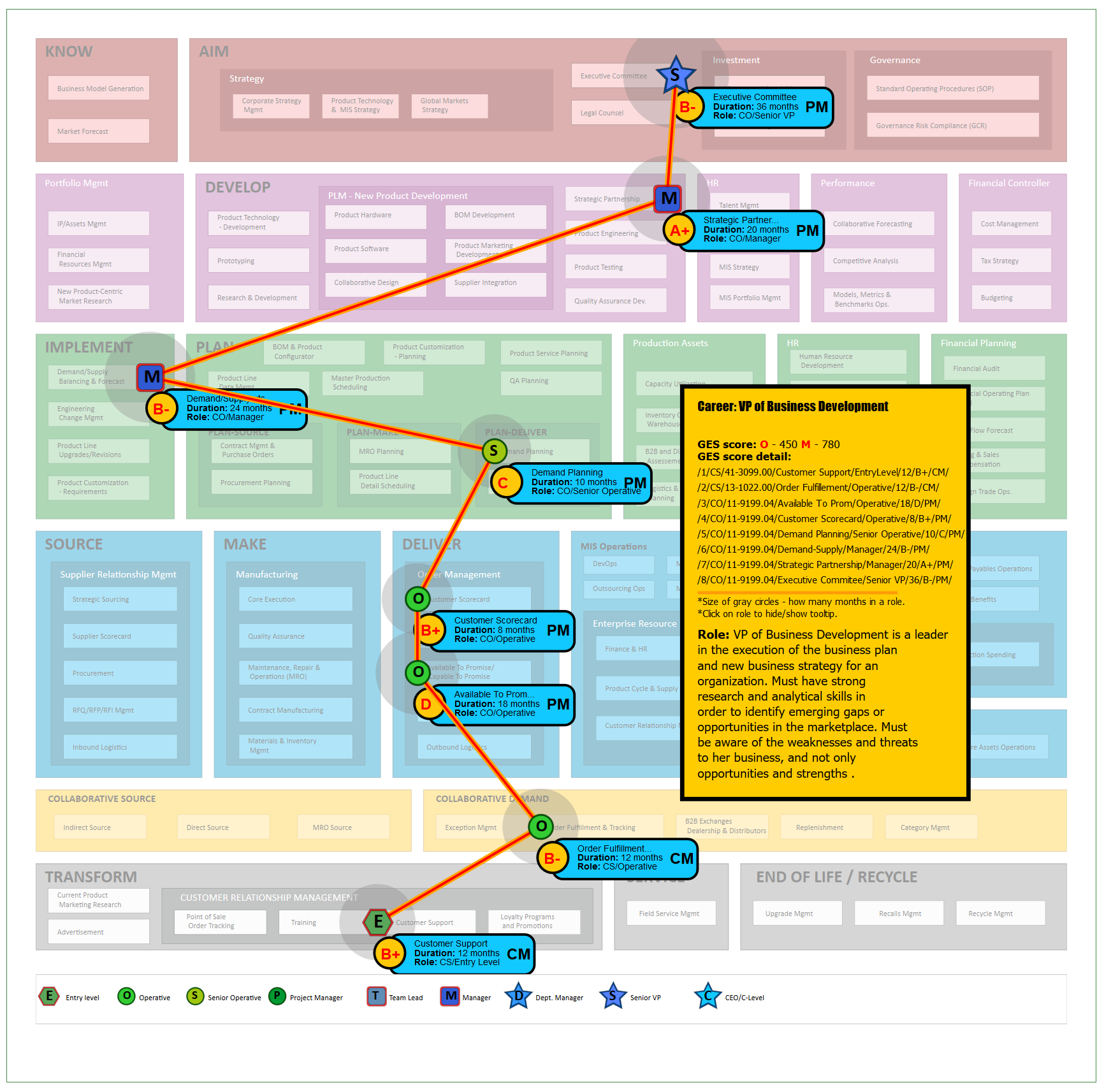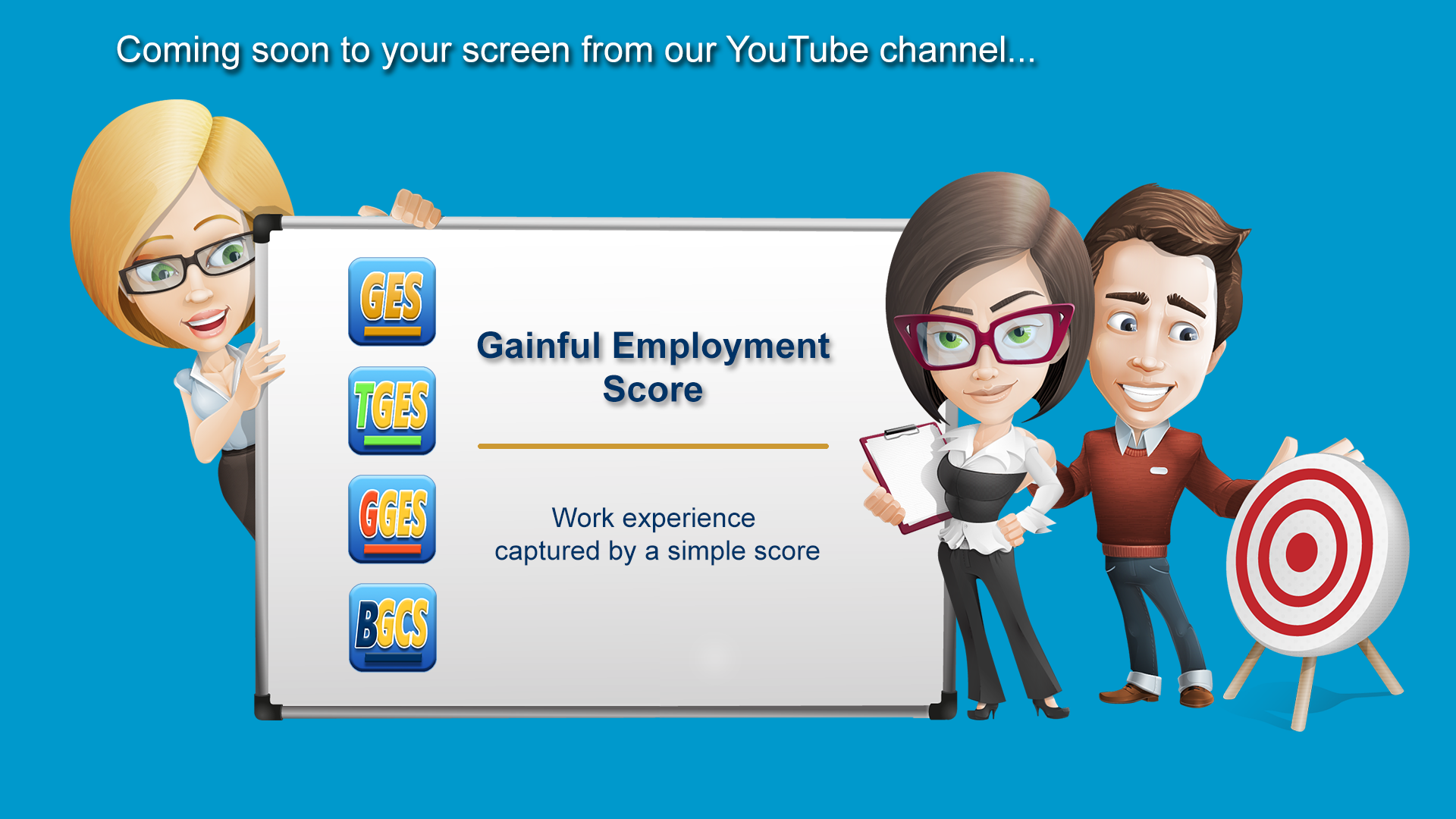Introduction - Can extended work experience be reduced to a simple score?
C Can your job experience, sometimes decades old with numerous roles and companies, be captured entirely by a simple score? Can the same score even be extended to cover one's experience in the fast paced and complex world of software development? Can a few numbers be more accurate than pages long resumes accompanied by a detailed description of a job seeker’s accomplishments? Can they also be a better predictor of a job seeker’s ability to succeed in a new job role?W e believe it is possible. Replacing a resume, which may represent fairly only the last few years of a job seeker experience, with a score that accurately captures the entire work experience, both as a manager and as an operative, it is a goal we believe it is worth pursuing. The model we propose is based on decades of experience, countless job engagements, and on a deep understanding how business works and what are the contributions required by each job role. It is completely agnostic to job titles, the size of the paychecks, or the size of the companies. When comes to the wide variety of industries, we abstract them to only four basic categories, and few special ones (such as government, and investment). The same simple score can also be used by an existing employee to learn about ways to improve it when low, and to plan their next career move.
This approach can be used not only by job seekers with years of experience, but also as a guideline for college students looking to get a better understanding of expectations when they enter the work force. For them, we extended these ideas into a platform called XCLNav, that can be used by college advisors to 'teach' students about their options when comes to personal career goals.
GES is like GPS points...
To use a simple analogy, GES is like a set of geographic coordinates. The generated interactive Graphical Resume is the result of entering those coordinates on a map. The map we use to represent them is based on a complete and comprehensive representation of all functions in a generic business, together with the complex relationship between them. And similar to a road trip, a map can show your current position and how close to a destination you are.

The main goal for GES is simple. It measures your 'ability to change' as an operative and your 'ability to drive change' as a manager. This is why it has two numbers ranging from 0 to 1000. To calculate these numbers we take a different approach than traditional scoring. We use a highly sophisticated model of the business that creates a scale of complexity for all its business functions. For each job position we are assessing the task associated and the complexity, either in a manager or operative role. This way we are not only capturing individual skills as either manager or operative, but also past history including career transitions.
Also part of the formula, we take into account individual career goals. All calculations are made against a declared career path. Changing a career goal, can greatly change the final score. Our model accounts for ten standard career paths. To account for various industry fields, we split the paths based on complexity in only four major categories. You can view more about this model in its own section.
Similar to the credit score, GES score can be encoded to provide further details. For each job position we calculate a subscore, and also encode several parameters that will make it easier to automate a search based on complex criteria.
... you enter on our Map to generate your Interactive Graphical Resume
G raphical Resume is a tool which uses the GES score to display a wealth of information for your career development in a graphical way. Some of what this information shows:How your career compares with one of the ten standardized areas,
For each job position it can highlight what would be the next logical step on your career path
What are the skills required to advance to the next logical step
It provides clear definitions for all job roles found in a traditional business, from entry level to top CEO.
Our goal is to continuously add new career development guidance information associated with this graphical map. Following is a sample Graphical Resume for a VP of Business Development that uses the data above as entry points. In the 'GES and Graphical Resume' section you can even use your own past experience to create your own Graphical Resume and use the navigation panel to understand the various relationship between business functions.

*Score for above job seeker: Operative - Good, Manager - Good; lack of direct experience in production or new product development will make it difficult to be promoted to C-Level (COO, CEO)
What about IT?
I nformation Technology field is not only complex, but it is also very dynamic. Every few years entire new platforms are introduced with consequences on the existing skill set and job experience. Our approach is to go back to the basics.We split the IT professionals in two large categories:
One category uses their skills in the MIS department, an area always associated with almost all traditional business. MIS role is of support or service-like to the core operations. For this category our assessment is done the same as any of the other business role, which is to measure the contribution to the overall business cycle based on the step in the support cycle, or tasks associated.
The second category of IT professionals are those working in a software company. In this case, we measure the contribution that is directly associated with the core business operations. Most of the software companies use the innovation-centric business model, but there are many of them, even some very large ones, which are organized entirely around the product-centric cycle.
While we recognize that programming abilities are important for changing jobs, our view is that they are not key to successfully design/develop new applications that will greatly contribute the a business baseline. Plus, there are plenty of companies which have their focus this very narrow set of skills.
You can find more about our apporach in GES for IT section.
What are the main benefits for job seeker?
OOrganizations can freely reassign and terminate employees as needed. Young professionals must create their own career paths by seeking out opportunities to develop skills and experience, networking with the right people and plotting each turn along the road. “There’s no question that most organizations expect people to take responsibility for their own careers” says Bruce Tulgan, consultant and author of The 27 Challenges Managers Face and It’s Okay to Manage Your Boss. “There’s no longer a one-size fits all career path in most organizations.” If you’ve been in the same role for two, three, or five years, and are itching for the next opportunity, chances are you need a lot of help to the 'do-it-yourself' career path. This is where GES and Graphical Resume can help.Comparison with Other Score Frameworks
The Financial industry was transformed radically when the credit score was introduced. Both loan seekers and loan providers have benefited enormously. Using the credit score, a loan can sometimes be approved in minutes. The process is acknowledged to be fair, faster, more accurate, and more comprehensive than any of the previous 'resume-like' approvals in use. And these were not the only benefits. The credit score can also play a guiding role towards financial stability. A loan seeker can use it to learn the steps he/she needs to take next in order to improve their financial situation.

The financial industry is not the only field that benefited from assigning a standard score. Businesses large and small, can have their performance measured by a simple score, which is the share price. Even billion dollar sports teams, has a simple score that reflects their standings during the season that tell you more than all their news announcements. And it doesn't stop here. Entire cities, and even countries, have their financial health captured by a credit rating.
We believe that hiring industry needs a similar process. Both job seekers and employers can benefit from having a score that reflects the ability of a job seeker to perform in a new job. For a score to be accurate, the calculation should be based on information held by a third-party independent organization. Information is collected from both employer and job seeker during their engagement.
Millenniums are expected to change jobs over 22 times during their working years. A system like GES would not only provide accurate records, but it will reflect skills learned during their entire work experience, and not only the last few jobs usually highlighted in their resume.
GES can be extended to teams and businesses too
C alculating a score for a team or a business is far more complicated than for an individual, but overall it follows the same guidelines. While for a job seeker we evaluate the ability to change jobs based on its previously gained experience, for a team or a business we calculate the ability to understand and fulfill a consumer need (as a standalone or part of a business) based on its previously gained experience. We call this score 'Gainful Business Consumer Score'.We took our inspiration from the way credit score has been extended from individuals to businesses, and even cities, governments, etc.
Status
We are looking for individuals, employers, or other organizations such as colleges to help with refining this new approach. Our main goal is to take our existing model and apply it to various industries and job roles.
Currently, our goal is to refine the existing algorithms used to calculate the score.
For more information please contact us.

